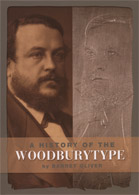 |
 |
A History of the Woodburytype This title is currently unavailable. About the Author: Published by: Carl Mautz Publishing, Nevada City, California |
The Bardwell Press. Tithe Barn House, 11 High Street, Cumnor, Oxford, OX2 9PE, United
Kingdom
Email: info@bardwell-press.co.uk Tel.: 01865 865 865 Fax: 01865 595 598
Email: info@bardwell-press.co.uk Tel.: 01865 865 865 Fax: 01865 595 598